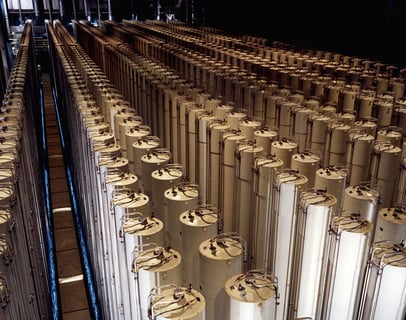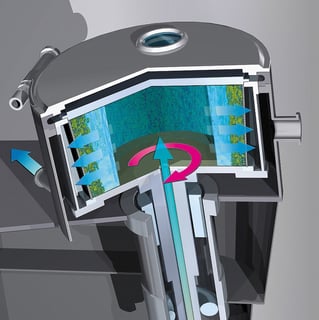Uranium Enrichment for Beginners
A quick guide for amateur WMD manufacturers
OUR WORLD


The Start of it All
The 16th of July 1945 was a landmark moment in human history. On the White Sands Proving Ground of New Mexico, several hundred scientists and military representatives watched the world's first detonation of an atomic bomb. "Gadget" was the name given to the device detonated at 05.29am with the explosive force of roughly 25 kilotons of TNT.
While the creation of the device and the science behind it had been a closely guarded secret, it was now to become even more so. US Intelligence at the time estimated it would take the Soviet government at least 10 years to develop their own nuclear weapon, but they were proven wrong in August 1949 and the Cold War began.
While the scientific knowledge of how to make such a device is commonly understood today, the world's governments have been understandably keen to restrict who has access to the technology of manufacturing. Nuclear weapons technology has been the subject of espionage and executions, the reason for assassinations and the use of cyber-warfare.
The Treaty on the Non-Proliferation of Nuclear Weapons, commonly known as the NPT, was conceived to prevent the spread of nuclear weapons. However, while the primary purpose of the treaty is to contain the spread of nuclear weapons, Article IV of the NPT "acknowledges the right of all parties to develop nuclear energy for peaceful purposes and to benefit from international cooperation in this area".
The Problem
While denying nations the right to develop 80 year old technology is one problem, another is that much of the science behind making a nuclear weapon is essentially the same as the science required in making the fuel to be used in "nuclear energy for peaceful purposes".
In the last few years western media have pointed their geiger counters at Iran, who have quite legitimately been developing nuclear energy for peaceful purposes. Now however, politicians are raising the issue that the state once described by George W Bush as part of the "axis of evil" is now approaching the stage where they could possibly build their very own Gadget, Little Boy, or perhaps Tsar Bomba.
Uranium Enrichment
Uranium is a naturally occurring element that is found in small amounts in the Earth's crust. In its natural state, uranium consists primarily of two isotopes: uranium-238 (U-238) and uranium-235 (U-235).
U-238 is the most abundant isotope, making up about 99.3% of natural uranium, while U-235 accounts for only about 0.7%.
To create fissile material for both nuclear weapons and nuclear reactor fuel, the concentration of U-235 needs to be increased.
The gas centrifuge method is the most common and efficient method used for uranium enrichment. It involves spinning cylinders, known as centrifuges, at extremely high speeds to separate the isotopes based on their mass or weight difference.
Inside the centrifuge, a gas is introduced, and as the centrifuge spins at between 50 and 60 thousand rpm, the heavier U-238 atoms move towards the outer wall while the lighter U-235 atoms collect near the centre.
The collected matter will still contain high concentrations of U-238 and so the process is carried out over and over until uranium with highly concentrated levels of U-235 is obtained.
Highly enriched uranium (HEU) has a concentration of U-235 of at least 90%. This level of enrichment is necessary to sustain the nuclear chain reaction in a weapon.
Once uranium has been enriched to the desired level, it is converted from a gaseous form into a solid metal form by the use of reduction compounds.
Stuxnet
In 2010, the existence of the "Stuxnet" virus was revealed. This malicious computer worm was believed to have been created by a joint US-Israeli collaboration with the intent of infecting PLCs used to control gas centrifuges. In particular, the centrifuges being used by Iran to enrich uranium. The software was designed to be nearly impossible to detect and would damage equipment by causing irregularities in the rotational speeds.
Conclusion
Lastly of course, the enriched and converted uranium needs to be weaponised. This involves designing and constructing a nuclear weapon, which is a separate highly complex and specialised process. It requires expertise in various fields, including physics, engineering, and explosives.
The world's energy requirements are continually increasing and the perceived harm caused by fossil fuels drives countries to seek alternative sources of power. Every year, more nuclear reactors are commissioned and the development of uranium enrichment becomes more commonplace.
Where it will all end is unknown, although perhaps mankind's ending will come with a bang, rather than a whimper.


Gas Centrifuge Cascade by U.S. Department of Energy
Centrifuge diagram by PIRO4D
Enriched uranium by Unknown, Wikipedia Commons


